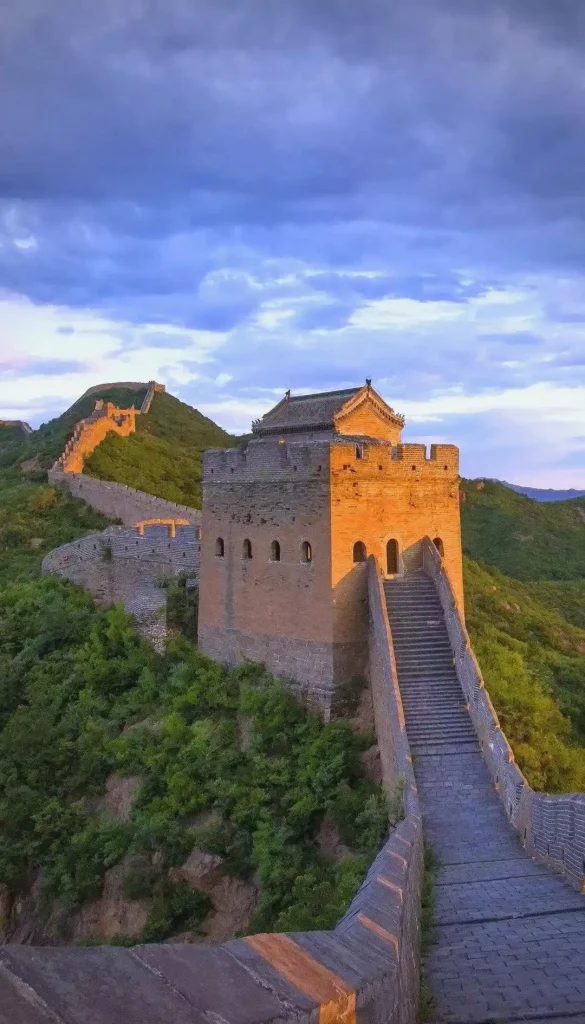The Great Wall of China is the longest man-made defensive structure in the world and one of the most iconic landmarks of China. For centuries, people have been curious about its exact length, but due to its vast history and the contributions of many dynasties, this is a question that has never been simple to answer.

The Challenge of Measuring the Great Wall
The Great Wall was not built by a single emperor or dynasty. Instead, it was constructed, rebuilt, and expanded over more than 2,000 years by around 20 different dynasties. Sections of the Wall stretch across deserts, mountains, plateaus, and grasslands, and new remains are still being discovered by archaeologists.
Because of this, the total length of the Great Wall has changed over time, making it difficult to determine a single measurement.
How Many Sections Does the Great Wall Have?
Despite being called the “Great Wall,” it is not one continuous wall. In fact, there are at least 16 major walls and defensive lines that together form the Great Wall system. Some were abandoned, others were rebuilt, and many overlapped with earlier constructions.
In Chinese, the Great Wall is called “Wan Li Chang Cheng” (万里长城), which literally means “Ten Thousand Li Long Wall.” One li equals about half a kilometer, so the name suggests about 5,000 km. However, this was more of a poetic phrase meaning “endless wall” rather than a precise measurement.
The Official Length: 21,196 km (13,170 mi)
In 2012, after a five-year archaeological survey, the State Administration of Cultural Heritage officially announced the length of the Great Wall to be 21,196.18 km (13,170 mi).
This measurement included all walls built by various dynasties throughout history. To put it in perspective:
- 21,196 km is nearly half the length of the Earth’s equator.
- It is longer than the distance from the North Pole to the South Pole.
Archaeologists also discovered many previously unknown sections during the survey, proving the Wall to be three times longer than traditionally believed.
Where Does the Great Wall Start and End?
The Great Wall stretches across 15 provinces in northern China.
- Its easternmost point is at Hushan Great Wall in Liaoning Province, near the Yalu River and the border with North Korea.
- Its westernmost end is at Jiayuguan Pass, located in the remote Gobi Desert of Gansu Province.
Among all provinces, Shaanxi has the longest remaining sections, with about 1,838 km, while Beijing preserves around 550 km of the Wall.
How Long Was the Ming Great Wall?
The most famous sections of the Great Wall are from the Ming Dynasty (1368–1644 AD). According to historical records and modern measurements, the Ming Great Wall stretched for 8,854.8 km (5,500.3 mi).
Earlier dynasties also contributed:
- Qin Dynasty (221–207 BC): Qin Shi Huang’s unification connected and extended existing walls, reportedly over 10,000 km.
- Han Dynasty (206 BC–220 AD): Expanded the Wall further west to protect the Silk Road.
- Warring States Period (475–221 BC): Built scattered shorter walls, some of which were later abandoned.
Over time, erosion, weather, and human activities have caused parts of the Wall to collapse, making preservation a serious challenge.
Why We Must Protect the Great Wall
Today, some sections of the Great Wall are well-preserved, especially near Beijing, but many remote parts are in danger. Natural erosion, tourism, and even brick theft have left scars on this cultural treasure.
It is essential to raise awareness of cultural heritage protection:
- Do not remove bricks or stones.
- Do not litter or vandalize the Wall.
- Support conservation efforts to ensure future generations can also admire this wonder.
Conclusion
So, how long is the Great Wall of China? The official answer is 21,196.18 km (13,170 mi), covering more than 15 provinces and stretching from Liaoning in the east to Gansu in the west.
Built by multiple dynasties over two millennia, the Great Wall is not only the longest defensive structure in the world, but also a symbol of Chinese civilization and a UNESCO World Heritage Site. Protecting it is our shared responsibility, ensuring that this magnificent creation continues to inspire the world for generations to come.